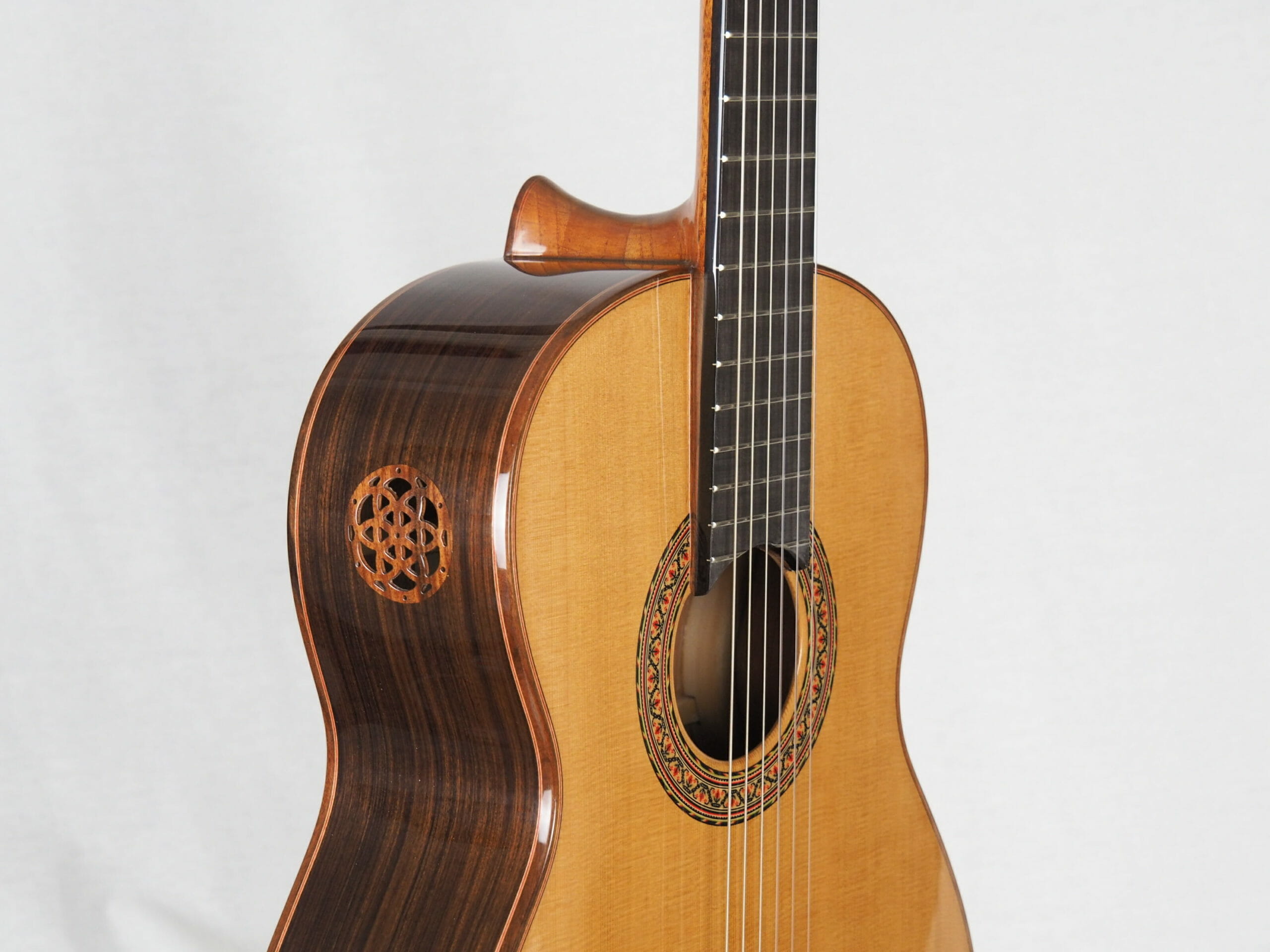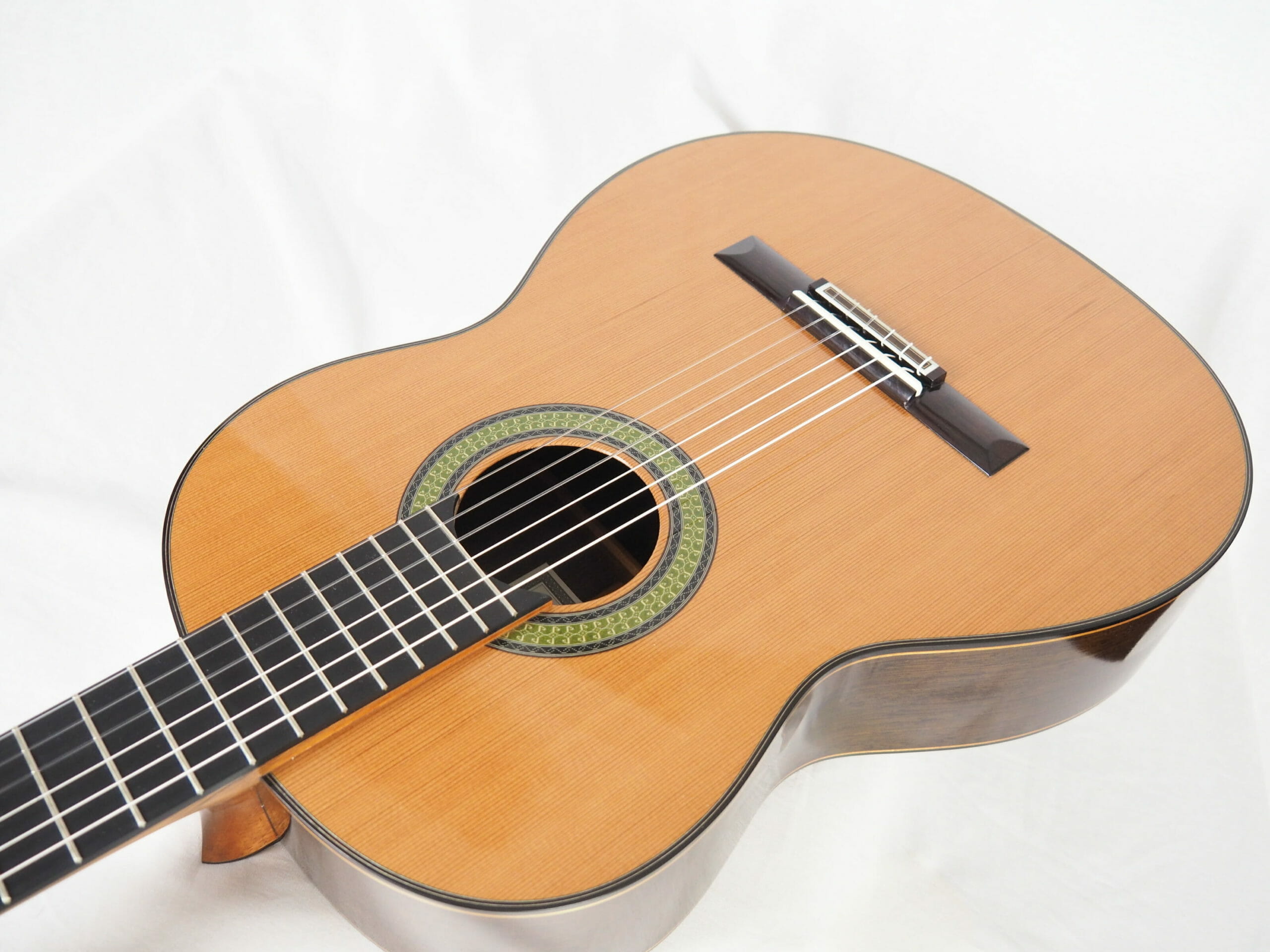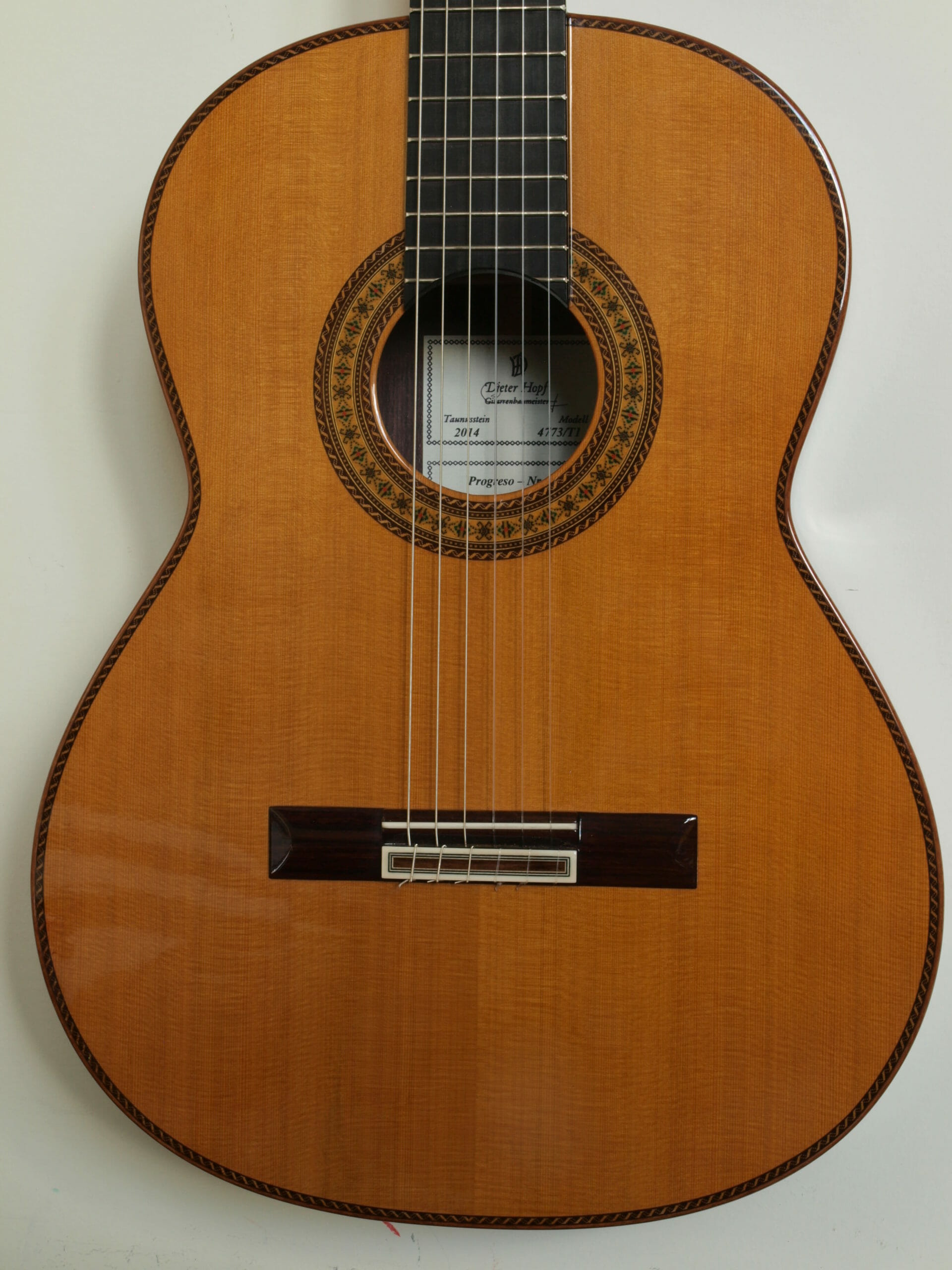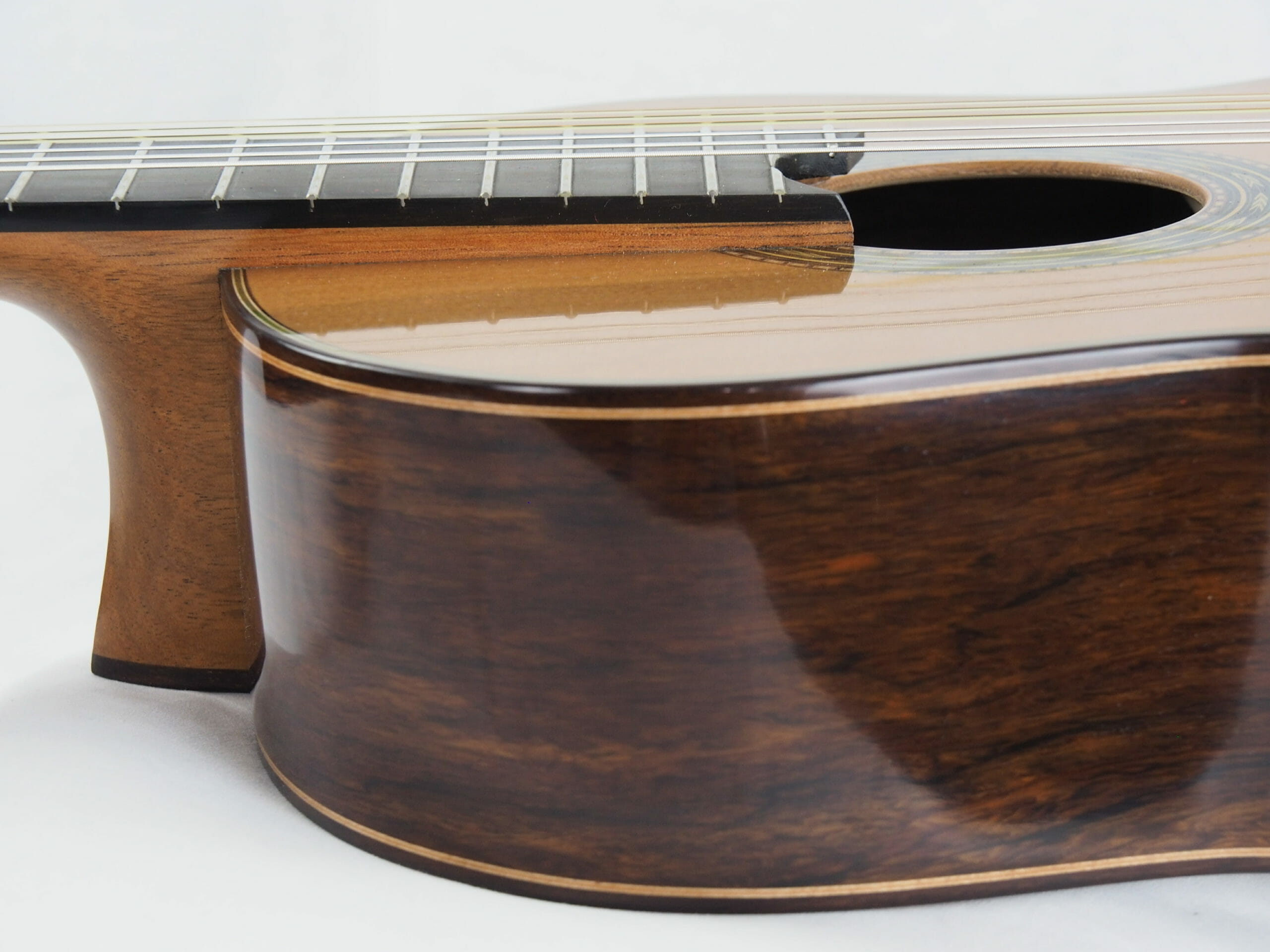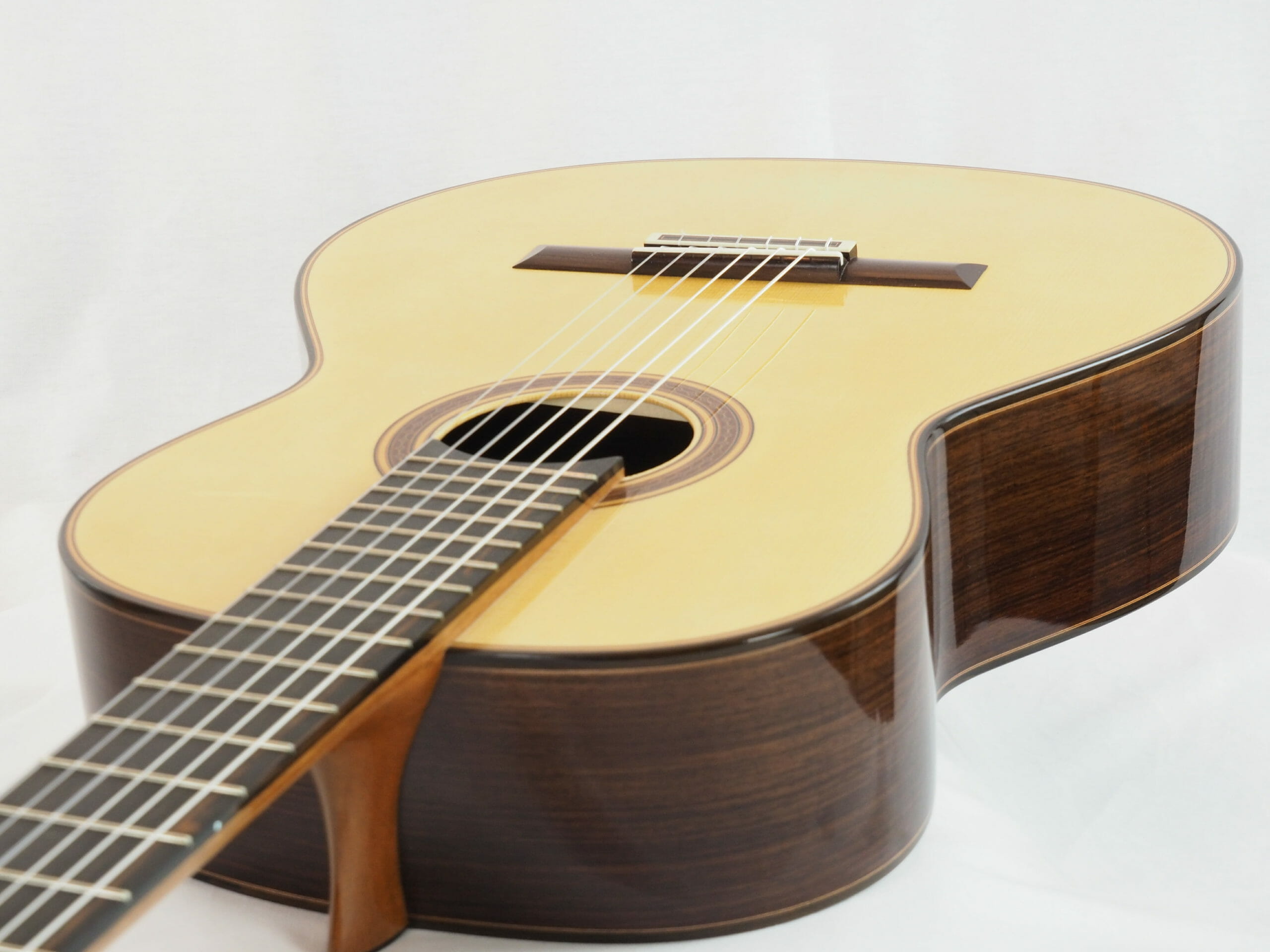Many luthiers are switching from traditional to DT classical guitars. It is true that there is some proximity in the construction of traditional guitars and doubletops. And indeed, one can think that to produce a doubletop and enjoy an extra volume, you just have to replace the traditional top with a sandwich top using Nomex and that the trick is done! Of course, that is not so simple.
We had the chance to talk to many DT builders and here a summary the discussions:
A not-so-easy exercise!
Looking at the received doubletop guitars, it is clear that this is often only half-success. If the volume is there at best, there is a lack of sound color because the dynamic takes over the sustain. In the worst case, we hear a big start/projection (like a boom!) and then a rather dry sound with a short sustain. The sound is often in the best case without any tone color. A beautiful sound color for us means for us, depending on the choice of the luthier, roundness and warmness, thickness of notes, or crystal-clear trebles combined with a long sustain and a beautiful separation of the voices.
The note duration problem
The sound duration is the sensitive point of doubletops especially when they are lightly built and therefore offer little mass/inertia to stabilize the resonances of the top. The note duration is indeed our selection criteria to select a DT. All notes – played separately by choking other strings – must have at least one white note duration ( you should count 1 to 2). If the guitar presents even one short note, we will return the guitar to the luthier. To overcome this problem of sustainability inequality and short notes, each of our luthiers has its secrets. Martin Blackwell uses what he calls the “Bouchet” bar in his top as a bar to extend and level notes.
The weight of the top and guitar as a determining factor
By comparing these new DTs with those of our recognized luthiers, the first observation is that tables and guitars as a whole are often too heavy. The tops such as those of Gernot Wagner and Matthias Dammann do not exceed 2.5 mm in thickness with two layers of cedar and Nomex or Balsa in-between. The weight of the guitar in total must remain below 1.6 kg. It is necessary to find the right thickness of each top and of the Nomex to also guarantee the solidity of the guitar. The double-tops require real know-how and several years of experience. Knowing that this of course remains an empirical observation because we also count among our DT those of Charalampos Koumridis which are 2.2 kg.
The nature of the bracing is to be reinvented
Because we are lucky enough to receive many doubletops, we found that the bracing is quite different from the one of traditional guitars. Some master luthiers position their bracing crosswise, others use carbon to further lighten their tops. Functionally it assures a completely different role than on a traditional guitar because it is the Nomex that ensures in principle the stability of the table and not the bracing that becomes an element to adjust the sound color.
Quality is key
The quality of the woods becomes paramount, the back and joint bars, the handle, and the key, everything counts including the cutting of the woods and the drying times. We visited the workshop of Gernot Wagner who showed us how the quality of the woods affected the sound and length of the sound.
In conclusion, it takes several years of experimentation and a strong commitment to the DT concept for the luthiers to find their ways (and its voice elsewhere).
We can only advise you to compare the doubletops that you will find with other DTs, otherwise, you risk seeing your musical appetite fade once you pass the grip of your instrument and the additional volume. Volume alone is not enough!
As far as we are concerned, of the small fifteen double-tables that we have received and tested to date, we have limited our choice to a few good DT that offer above all beautiful sound colors and of course an acceptable power: this said we look forward to a double table of a French luthier Jean-Noel Lebreton which promises to be promising.
Everything remains to be learned, and on the time scale, DT is still a very young building concept compared to the tradition of lutherie ‘Bouchet’ or Torres for instance. And this idea fills us with enthusiasm and bodes well for good discoveries to come.
Here is the list of DT that have passed through our showroom.
Charalampos Koumridis, Dennis Tolz, Jim Redgate, Carsten Kobs, Glenn Canin, Dake Traphagen, Andreas Kirschner, Andreas Kirmse, Martin Blackwell, Johannes Kitselis, Vassilis Vasileiadis, Max Cuker, Jean-Noel Lebreton, Rafal Turkowiac, Reza Safavian, Vincent Humml, Mattias Dammann, Alexander Pashentsev, Dieter Muller, Claudia D’Ammassa, Christian Koehn, Jeroen Hilhorst,…

 French
French German
German Spanish
Spanish Italian
Italian

